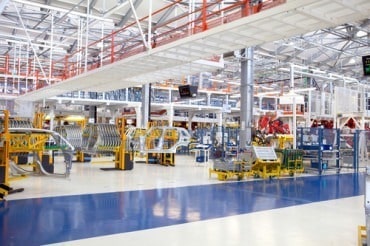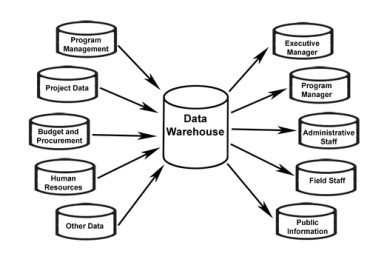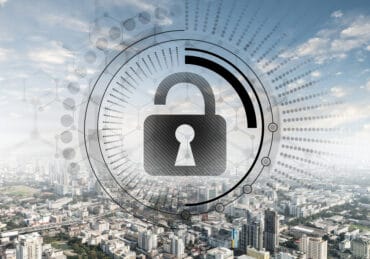
A modern ERP system provides the opportunity to add artificial intelligence (AI) to automate key analytic processes, making it quicker for employees to make well-informed decisions.
The shift from a traditional workplace to a more digital, cloud-based environment forced business leaders worldwide to rethink the way they do business. In particular, they needed to rethink their data and systems in a remote work era.
In today’s increasingly digital and distributed business landscape, organizations often rely on hundreds (or more) of custom applications to solve specific challenges. Data resides anywhere and everywhere – on-premises, in the cloud, within edge computing. To be successful in this environment, departments across the business — from finance, accounting, and human resources to supply chain, inventory management, sales, and marketing — all need access to the same data. By breaking down data silos, the entire company can unlock greater value by having the latest and most accurate data to analyze and take action on.
While many organizations use Enterprise Resource Planning (ERP) software to manage their day-to-day business activities and catalog that data, chances are those systems aren’t quite up to par given the new landscape. One global survey of 1,675 CTOs and enterprise architects showed that more than 70% have begun modernization of their IT infrastructure application consolidation and migration to the cloud. However, they are running into obstacles on their ERP modernization journey, including budget constraints (40%), complex IT environments (37%), and legacy technology (35%). Only 17% of survey respondents reported being ahead on their ERP modernization strategies and able to keep up with the pace of business.
ERP is not a new concept; software solutions have been around since the late 80s and early 90s and were initially driven by the IT department. Today’s ERP is much more than an IT project. The data within an ERP system and connected to it from partners, customers, and third parties is the lifeline that fuels businesses. And, just like technology has vastly evolved over the past 30+ years, businesses that utilize ERP systems must modernize their processes to keep up.
See also: Moving Your Data to the Cloud? Read This First
Modernizing ERP
Modernization means change, and change is not always welcomed. But, if businesses want to stay competitive in today’s market, it’s a must. Today’s businesses need more agile and flexible infrastructures that can be easily updated; outdated ERP systems just don’t make the cut. They can actually hold a business back and can cause internal disruptions by limiting access to important data. Many businesses recognize this; 58% of businesses plan to move ERP systems to the cloud.
I’m not going to lie; an ERP modernization project is complex in terms of numbers and the scope of applications to connect. Then there are intra- and inter-organizational processes to address; multiple data stores and sources; structured, unstructured, and even dark data; management and reporting tools preferences; and security and compliance requirements. These can lead to high-risk, high-cost, and long ERP implementations.
Five Steps to a Modern ERP System
A modern ERP system delivers high-performance, highly usable solutions that can support and adapt to the fast pace of digital environments. Modernizing current systems is no easy feat, but it is necessary. Here are five steps organizations should follow to bring their ERP systems up to date with today’s business needs.
1. Migrate to the cloud
Moving an ERP system to the cloud is not an easy task. It essentially involves picking up the entire ERP and moving it, along with all associated data, to a new architecture. But it’s well worth the effort and a key part of a modern ERP system. To successfully accelerate cloud migration of key processes and data, focus on:
- Speeding integration across pure and hybrid cloud ecosystems
- Intelligently connecting and synchronizing data in real-time
- Leveraging automation to gain visibility of cross-cloud processes
2. Build AI analytics on top of the data
When looking at cost-effectiveness and efficiency, data analytics is an integral part of any business. A modern ERP system provides the opportunity to add artificial intelligence (AI) to automate key analytic processes, making it quicker for employees to make well-informed decisions. To achieve a competitive advantage from AI-driven analytics, set up:
- Automated data collection and normalization, including non-cloud and non-ERP data
- Intelligent connectivity to drive real-time analytics
- Flexibility to change analytics technology to respond to new business challenges
3. Revitalize data stewardship
Today’s businesses rely on data governance, compliance, security, and privacy. Ensuring the quality and fitness of data and metadata helps to manage the risks associated with regulatory requirements. Organizations should turn their ERP migrations into an opportunity to create clean, validated, integrated, and true data sets that span the enterprise. To ensure data is protected and not lost or compromised during the ERP migration process:
- Centralize an intelligent master data set
- Normalize and catalog all data, including dark data
- Streamline and simplify enforcement of data policies
4. Review the full total cost of ownership
The business environment has changed dramatically over the past few years. Projects that took years to complete in the past now need to be completed in weeks. When modernizing your ERP system, take a moment to evaluate the costs of ownership of technologies used throughout the enterprise and ask whether they are still worth the investment. To do this, one should:
- Take a holistic view of costs and control measures
- Improve how efficiency and productivity are measured
- Be able to swap out sources of high costs or inefficiencies
5. Lean into the composable architecture
A cloud-based ERP enables a composable architecture; it allows organizations to put together applications, networks, storage, and databases in a modular fashion that makes scaling up or down much quicker, less expensive, and more efficient. Composable ERP can be a competitive differentiator as it offers organizations the flexibility to use apps and technologies once they’re available. To take advantage of a composable architecture of a modern ERP system, focus on:
- Using intelligent connectivity and automation to shorten implementation times
- Composing ERP functionality based on evolving business needs
- Providing users visibility into new composed processes and data to improve performance and spot opportunities to replicate the functionality
Organizations today need a portfolio of connected, high-performance, highly usable solutions that can support and adapt to the fast pace of digital business environments. To meet the challenge, business leaders need to replace old legacy systems with modern, cloud-enabled ERP solutions. These provide business leaders improved reporting and visibility into daily operations that affect their entire organization while creating more positive end-user experiences. While ERP migration can seem like a daunting task, it’s imperative for any organization that seeks to not only survive but thrive during these changing times.






























